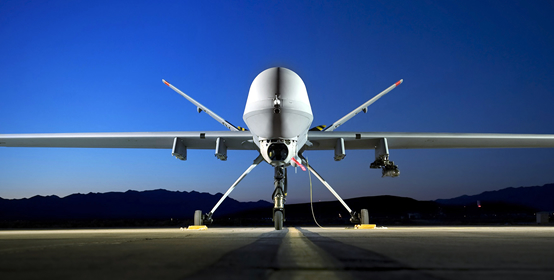
UAV technological advancements are continuing to advance at a rapid pace. These developments are helping the technology gain a footing in a wide variety of sectors ranging from commercial to military. One area of the largest areas of innovation is armed UAV development.
The United States has long been a leader in UAV use during warfare. It all started after the United States saw a live demonstration of a weaponized drone the Israel Air Force used in 1982. That first drone was called the Pioneer. Since then, the U.S. has rapidly expanded its military drone capabilities and has used them for a variety of anti-terror campaigns and reconnaissance missions. The three main drones being used currently by the United States are the MQ-1 Predator, MQ-1C Sky Warrior, and the MQ-9 Reaper. All three of those drones are made by General Atomics. The MQ-1 Predator is still the most widely used variant in the military today. Due to its proven track record, the army commissioned the development of their own version known as the Gray Eagle. The Gray Eagle supports an impressive 1,075 payload capacity, 29,000 feet cruising altitude, 25 hours of operation time, and a max speed of 167 knots. Due to its success, the army even signed a contract with General Atomics to provide continued logistics support for their drone series. Both the Predator series and the Gray Eagle have delivered impressive results. They have a reasonably high operational time, an impressive cruising altitude, and are capable of handling a large variety of tasks ranging from reconnaissance to search and destroy mission. However, there are still improvements to be made. One of the most researched areas is drone operational time.
Most commercial UAV aircraft cannot operate for any more than a few hours at a time. The government’s coveted Predator and Gray Eagle series are probably the most advanced options available supporting up to 25 hours of operational time. However, companies like ByeAerospace are looking to change that. They recently announced a collaboration project with SolAero Technologies to create a drone that operates using the latest high-efficiency solar cells today. These cells support up to 350-watts of energy production per square meter of surface area. When in high-altitude conditions with low temperatures, their power efficiency is only further increased. Due to the 15-meter wing design, the project has the potential to create a drone with practically limitless operational time. The project is geared towards providing extended reconnaissance capabilities, agricultural planning, rural internet deployment, and more. Even with advancements in operational time, there is one key area that will need to be further developed before drone use can continue to grow. That area is known as line-of-sight.
One of the biggest hurdles that drone development has recently faced is known as line-of-sight. This has to do with the FAA’s latest rules that were issued relating to UAV operation and responsible use. One of their rules is that drone operators must maintain a constant line-of-sight when the drone is in operation. Fortunately, companies like Vigilant Aerospace are working to develop solutions for this problem. They recently announced the completion of their FlightHorizon detect and avoid collision system. In their testing, the system managed to successfully track and provide collision warnings for 100% of the scenarios. The test went so smoothly that they were analyzed by the FAA’s senior UAV regulator. Compared to its competitors, the software has one key advantage. It easily uses the existing air traffic control system to source its data and is suitable for both small and large UAVs.
UAV use is only going to continue to grow at an exponential rate. Other countries are readily adopting the technology for a wide variety of uses like crop spraying and map development. Countries like France are even beginning to expand their fleet of drone aircraft. However, with these rapid developments, it is clear that many laws and regulations are falling behind. The FAA’s latest ruling is an example of a government agency trying to play catch up with the technological developments occurring worldwide. Fortunately, aerospace companies are working with them to help create solutions to their concerns and foster rules that do not inhibit UAV use and innovation.